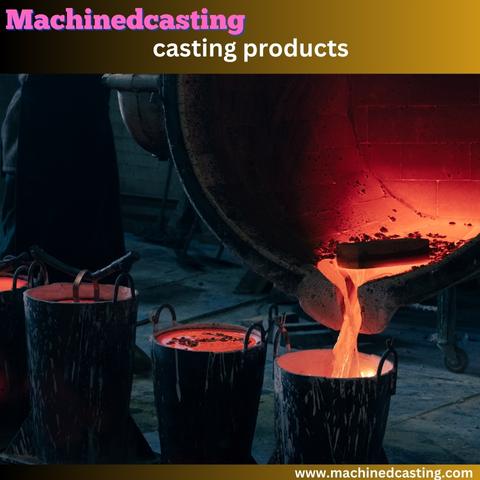Casting products involves a transformative process of creating objects by pouring liquid material into a mold and allowing it to solidify. This versatile manufacturing technique is utilized across various industries, from automotive to jewelry-making, enabling the production of intricate and customized items. Here's a comprehensive guide on casting products, covering techniques, materials, and essential steps for successful manufacturing.
-
Understanding Casting Techniques:
-
Investment Casting: This method involves creating a wax pattern, encasing it in a ceramic shell, melting the wax, and pouring the molten material into the cavity.
-
Sand Casting: It's one of the oldest methods where a mold is formed in sand by compacting it around a pattern. Molten metal is then poured into the cavity.
-
Die Casting: Ideal for high-volume production, molten metal is forced into a steel mold under high pressure. It's commonly used for creating precise metal parts.
-
-
Selecting the Right Materials:
-
Metals: Aluminum, bronze, brass, and steel are popular choices for metal casting due to their properties like strength, durability, and versatility.
-
Plastics and Resins: For lighter and more intricate designs, plastics and resins are used. They offer flexibility in shapes and colors.
-
Ceramics: Used for creating pottery, tiles, and specialized industrial products due to their heat resistance and electrical insulation properties.
-
-
Steps for Successful Product Casting:
-
Designing the Mold: Create a detailed design of the product and a corresponding mold. The mold must be durable and compatible with the chosen casting material.
-
Preparing the Material: Melting or liquefying the material to the right temperature for pouring into the mold. Attention to temperature and consistency is crucial for quality casting.
-
Pouring and Solidification: Carefully pour the material into the mold. Allow it to cool and solidify as per the material's specifications.
-
Removing the Casting: Once solidified, remove the casting from the mold carefully. Finishing processes like trimming, polishing, or coating might be required.
-
-
Safety Measures:
-
Always wear appropriate safety gear like gloves, goggles, and heat-resistant clothing.
-
Work in well-ventilated areas to avoid inhaling harmful fumes from melting materials.
-
-
Quality Assurance:
-
Inspect the finished product for any defects or imperfections.
-
Conduct tests to ensure the product meets the required standards.
-
In conclusion, casting products involves a blend of artistry, technical expertise, and precision. By understanding the techniques, selecting suitable materials, following meticulous steps, prioritizing safety, and ensuring quality control, manufacturers can produce outstanding casted products across diverse industries.


No comments yet